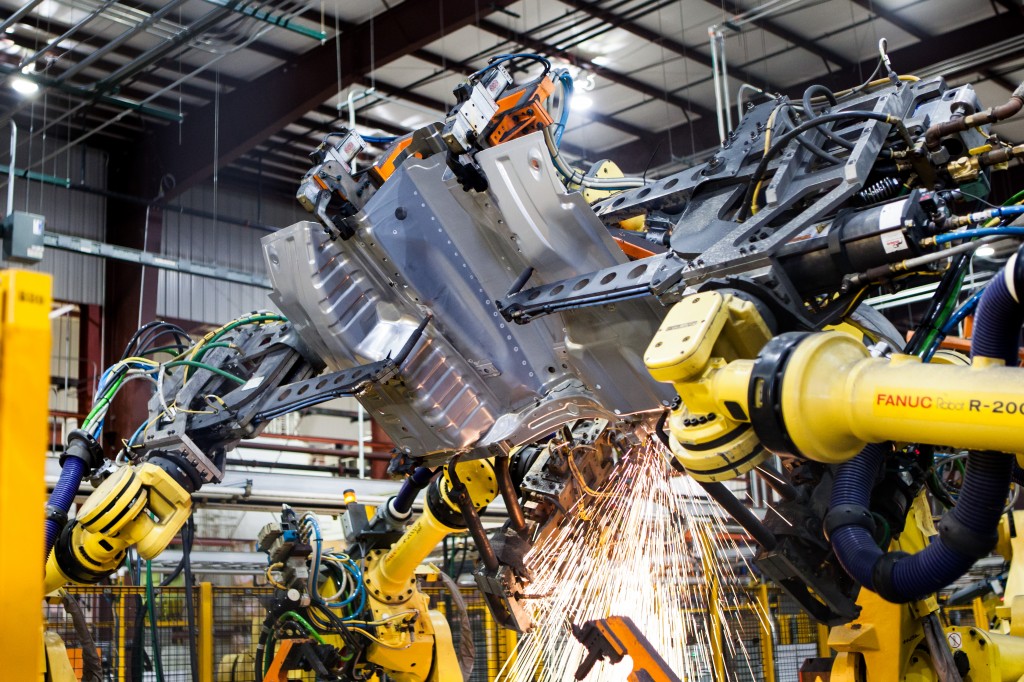
(Photo: Magna International)
TORonTO Auto production in ontario will continue to dro in the coming years unless theres a sudden decline in the Canadian dollar or autoworkers agree to wage concessions to better compete with the U.S. and Mexico, a number of experts say.
Despite consistently high auto sales figures and renewed investment in a sector that spent years struggling because of the economic downturn, assembly plants in Canada arent seeing the upswing they should and production in ontario isnt growing in the way analysts had expected.
Most forecasters had anticipated production to strengthen this year and its fallen short, said Derek Burleton, deputy chief economist at TD Bank Financial Group.
It underscores the competitive challenges, because the sector is still enjoying a cyclical rebound from the U.S. recession and yet (in Canada) production is down.
The high loonie, large government incentives for automakers to build plants in the U.S. and Mexico, as well as favourable trade agreements between Mexico and countries in South America, Europe and Asia have all hurt Canadas chances to win production, adds Anthony Faria, an automotive expert at the University of Windsor.
Automakers also like to build vehicles close to their customers in the U.S., which gives American plants another advantage, while taxes along with land, construction and utility costs are also higher in Canada, he said.
But one of the biggest drags on the countrys competitiveness is labour costs.
Theres no way Canada could compete labour-cost wise with Mexico, thats a non-starter, said Faria.
RELATED: Magna plans $100M factory in Mexico
But we need to be more competitive with labour costs in the U.S., because the U.S. is getting a lot of new automotive investment; Canada is not.
It costs a unioized car company $35 an hour in direct cost to employ an auto worker in Canada, or about $67/hr with benefits figures that amount to $28/hr and $56/hr for a Detroit Three plant in the U.S., Faria said.
The U.S. wage is one automakers perceive as more reasonable, he added, and they are showing it by investing in American plants.
The UAW pay scale includes a second-tier wage rate, which brings newer workers in at a lower rate, a move the Canadian Auto Workers unio, now called Unifor, declined to do.
Unifor national president Jerry Dias said his unio has no intention of competing on wages with Mexican autoworkers, who are working for nickels and dimes compared with his members.
No industries in Canada or the U.S. can really compete with wages if its all about wages, said Dias.
If its about productivity, we are in really good shape.
Labour costs in Canada are on par with that of the UAW in the United States, Dias said, adding that with the loonie slowly falling he is much less concerned about jobs than he was three years ago.
As long as the products that we continue to make in Canada are selling and selling well, things are fine, he said.
If the products that we build start to drop, then were going to need a commitment on future product.
Government support will also remain key to the auto sector, said TDs Burleton, noting that investments like $700-million in joint funding for Fords Oakville plant announced last month provide a jolt of good news to the sector.
The challenge that governments face is that there is a lot of competition for the amount of support they provide industries, said Burleton.
Every decision on what industry to support has to be justified by the perceived benefits, and when theres limited fiscal dollars, its just a very competitive thing.
Over the longer term, the future of manufacturing in Ontario, including the auto sector, will depend on whether the productive advantages in Canada more than offset the cost disadvantage, Burleton said.
There is a future for manufacturing in Ontario, but realistically its going to be a lower level that we experienced traditionally.




